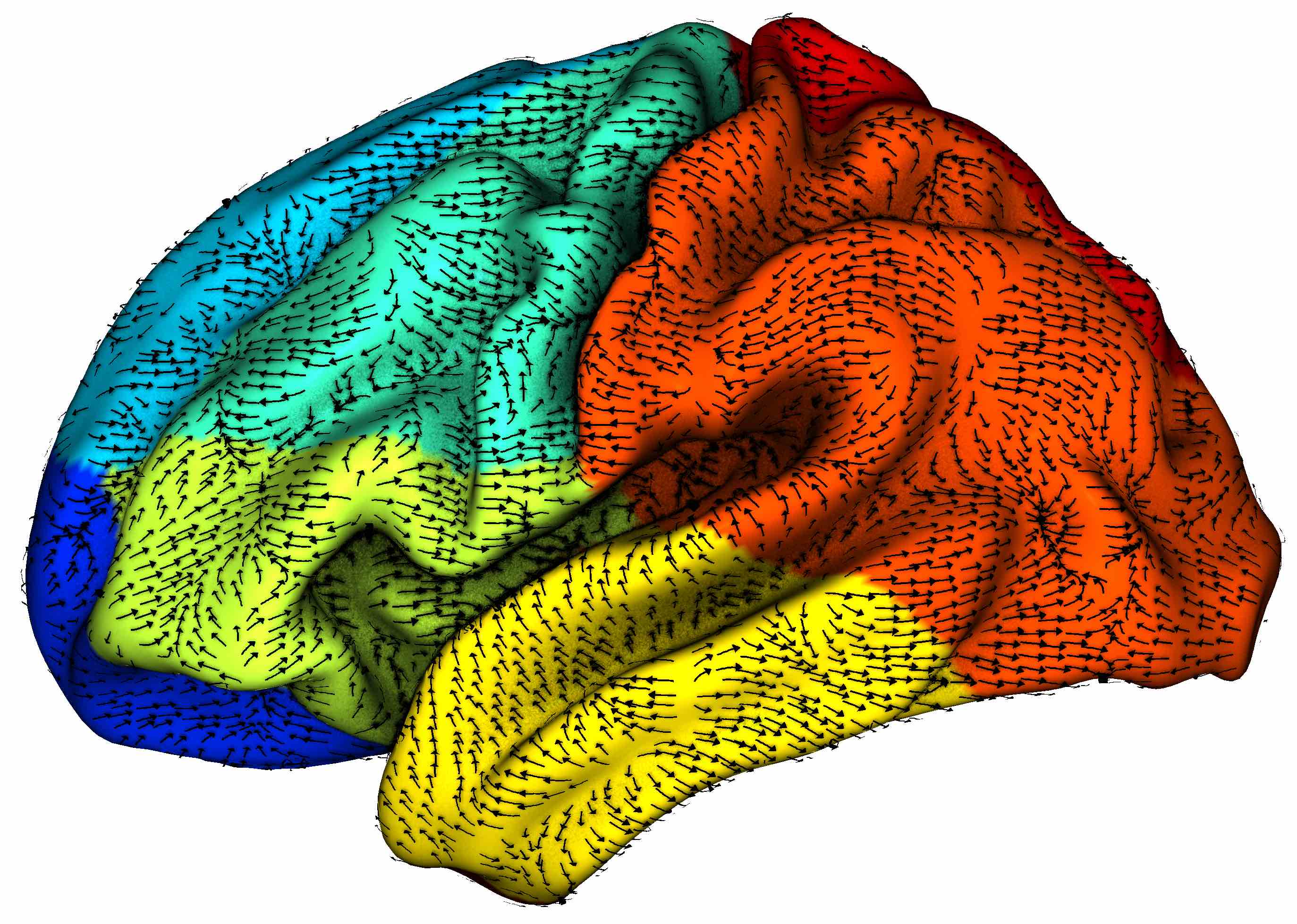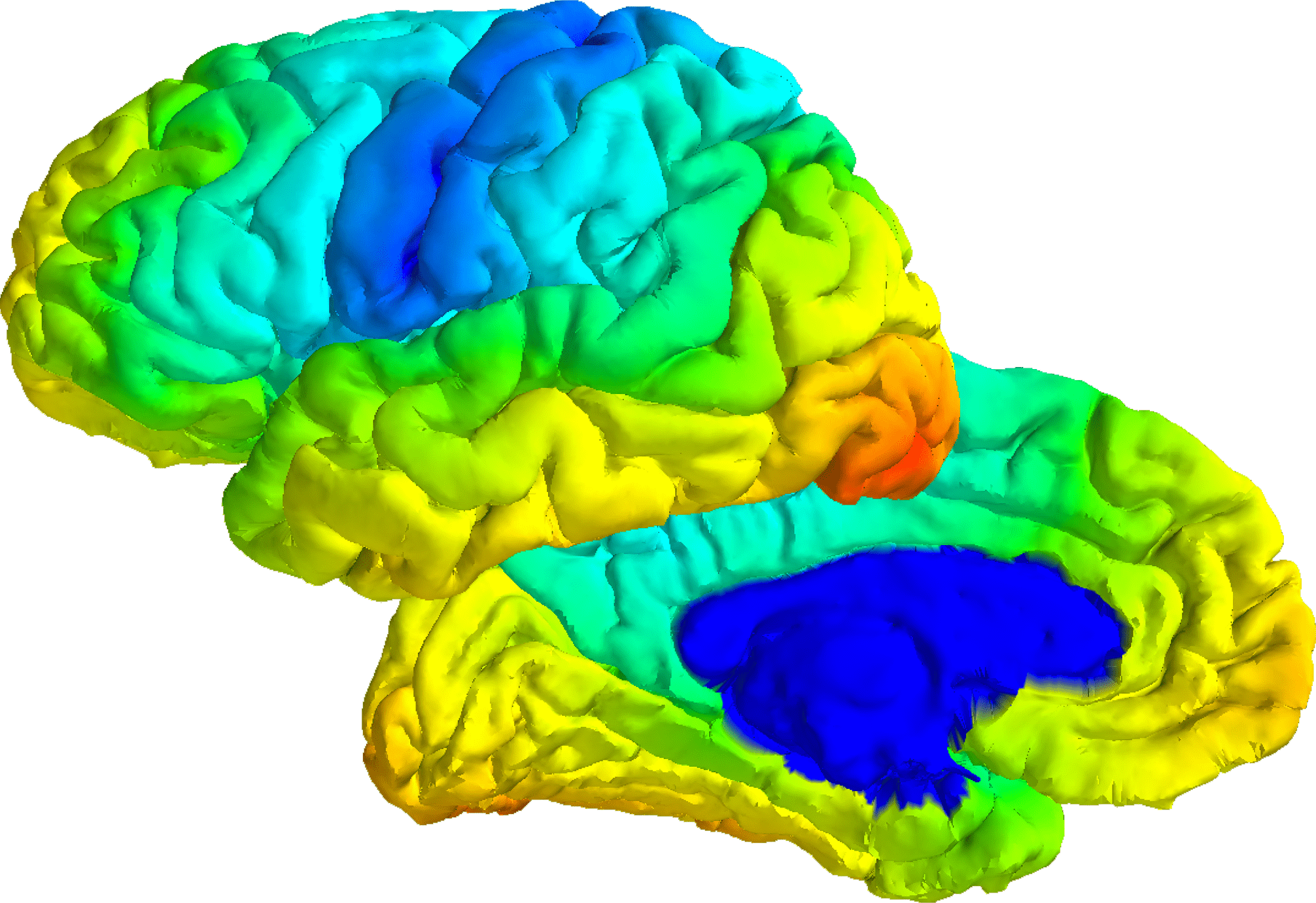Code
All our code is available at github.com/NeuroanatomyAndConnectivity
Below you’ll find descriptions of some of our tools, as well as additional software resources that were developed by lab members over the years.
Resting-state processing pipelines
Pipelines for processing resting-state fMRI data using Nipype.
Connectivity visualization
We have developed a few tools for visualization of brain data.
Edge-bundling & connectivity glyphs
Joachim Böttger developed several software tools to facilitate the interactive visualization of high-dimensional connectivity data in three-dimensions:
Spatial trends along the cortical surface
Sebastian Eichelbaum developed the Directionality Indicator, which enables the visualization of directional information along the cortical surface.
Click the image to the right to see an example.
Measuring distance along the cortical surface
The surfdist Python package can be used to calculate the exact geodesic distance from nodes or regions-of-interest along the cortical surface.
Mind-wandering questionnaire
The New York Cognition Questionnaire (NYC-Q) is a questionnaire developed by Jonny Smallwood to characterize the content and form of mind-wandering.
Nighres
Nighres is a Python package for processing of high-resolution neuroimaging data developed by Julia Huntenburg, Pierre-Louis Bazin, and Chris Steele.


